
| Year | Population |
|---|---|
| 1970 | 7,601 |
| 1980 | 8,098 |
| 1990 | 8,725 |
| 2000 | 8,824 |
| 2010 | 8,589 |
| Geographic Data | |
|---|---|
| N. Latitude | 44:46:30 |
| W. Longitude | 69:41:15 |
| Maine House | District 107 |
| Maine Senate | District 3 |
| Congress | District 2 |
| Area sq. mi. | (total) 60.6 |
| Area sq. mi. | (land) 59.0 |
| Population/sqmi | (land) 145.6 |
| County: Somerset
Total=land+water; Land=land only |
|
[skow-HEE-gihn] a town in, and county seat of, Somerset County was incorporated on February 5, 1823 as the Town of Milburn from a portion of Canaan. It annexed land from Norridgewock (1828, 1856), from Cornville (1831, 1833), and from Fairfield (1858).
The name was changed to Skowhegan in 1836 and, with the annexation of Bloomfield in 1861, its modern boundaries were complete. The chart below shows the Bloomfield population that came with it.
Recorded as Skwahegan in early reports, the name means “watching place for fish,” drawn from the falls in the Kennebec River that harbored salmon. Local Indians speared them as they attempted to scale the falls. Now the falls have been harnessed for electric power just below a small island.
The Municipal Building/Opera House functions as a theater and lecture hall. Booker T. Washington, William Jennings Bryan and William Howard Taft spoke there.
On April 30, 1772, Joseph Weston and his family arrived as the first white settlers in the area. On September 29, 1775, Benedict Arnold and his army made camp there on their way up the Kennebec to Quebec. They met a few challenges:
Half a mile from the falls there was a right angel turn [the Great Eddy] with whirlpools caused by the narrow channel above. Here the bateaux slammed against the many rocks. Above this there was a half mile of very rough rapids and then the falls. . . .
To get the bateaux over the carry through the cleft in the sheer rock walls, one man had to drag, and another must push, pressing himself against the walls like a snail. (Calvert, pp. 334-335)
Long the home of shoe making and textile manufacture, these industries were on the wane when Scott Paper Company opened a $230 million paper mill on the town line with Fairfield. Now owned by South African Pulp and Paper (SAPPI), the mill shelters part of the town line which runs through it.
In in mid-18th century, Dr. Nathaniel Whitaker was the first minister, first doctor, and something of a lawyer, having been educated at what is now Princeton University, according to the records at the Skowhegan History House. In 1811, Revolutionary War General Josiah Locke established a tavern (inn) at the corner of Main and West Front Streets. He operated the tavern for 50 years and was postmaster for 49 years. The Locke Tavern was demolished c. 2015.
The Dudley’s Corner School House, on U.S. Route 2 east of the main village, was the municipal center in the early 19th century, hosting “all town meetings but two 1828-1849” according to the plaque placed on it by the Daughters of the American Revolution in 1932.
Textile and shoe manufacturing were major employment options for local residents during the late 19th and early 20th centuries. A survey of labor organizations in 1903 noted the presence of the Bricklayers, Masons and Plasterers’ Union; Carpenters and Joiners’ Union; Laborers’ Protective Union; and Painters, Decorators and Paperhangers. No mention of textile workers or shoemakers unions.
The 1892 Skowhegan Grange Hall was in disrepair in the late 20th Century. According to a 2005 review of its history: The historic building was the home of community meetings, theatrical plays, different kinds of musical dances, and traveling performers. This Grange building may be closed down. In the last few years, Skowhegan Savings Bank has bought out the Skowhegan Grange. In 2005 it was being used for storage.*
In 2019 the building was rehabilitated by a concerned community group.
The other end of the Dudley Corner Road is known as Malbons Mills, named for the site of the old shingle mill powered by the dammed water of Wesserunsett Stream. According to the 1905 Skowhegan A Register, “About 1792, James Malbon, Sr. built on the Wesserrunsett, at the place now known as Malbon’s Mills in the northern part of the town. This mill was run by succeeding generations of the Malbons for many years. The mill here is now [1905] operated by Bradbury Bros.” The remains of the dam and the foundation of an old bridge remain just below the newer bridge.
Once home to Camp Modin, a camp for Jewish boys and girls until 1992, Lake George Regional Park is split between Skowhegan and Canaan. The park is owned by the State of Maine, leased to the two towns, and operated by a non-profit corporation.
A restaurant on Water Street, renamed the “Empire Grill,” was filmed in 2003 during the production of the movie Empire Falls, based on the Pulitzer Prize winning novel by Maine author Richard Russo.
Among the distinguished people who were born or lived in the town include U.S. Senator Margaret Chase Smith and her husband, U.S. Representative, Maine State Senator, and newspaper publisher, Clyde H. Smith; Governor Abner Coburn, for whom the local park is named; Abner Coburn’s brother, Stephen Coburn, was a member of the U.S. Congress; Daniel Dole, a missionary to the Hawaiian Islands who helped establish Oahu College; Charles A. Coffin (1844-1926), the first president of the General Electric Company; and Artemus Ward, a humorist who worked briefly in a local printing business. U.S. Representative Forrest Goodwin was born in Skowhegan. Samuel Wadsworth Gould, a U.S. Representative, was a long time resident and postmaster. Another 19th century U.S. Representative, County Attorney, and state legislator, David Kidder, was a resident here.
On June 27, 1955 President Dwight D. Eisenhower spoke briefly to the large crowd at the Skowhegan Fair Grounds on his way back to Washington DC after vacationing at a sports camp in Lynchtown Township.
“The Island” once was the site of the old high school, which became the junior high, since demolished. It still is home to a church, a former textile mill, the historic fire station, and the “power house” serving the dam on the Kennebec River. The downtown historic district contains several interesting commercial blocks.
The town became home to the Women’s Correctional Center in 1935 when women from the Maine State Prison in Thomaston were transferred to that new facility. It has since been closed.
Water Street has remained much the same since the 1920s. The Opera House/ Municipal Building is at center distant.
Skowhegan was one of many Maine communities that participated in the Ground Observer Corp defense effort in the 1950s. An observation post was located atop one of the buildings on the right side of Water Street.
A huge sculpture of an Abenaki Indian, by Bernard Langlais, rises from the north end of the municipal parking lot in honor of the area’s native heritage. The Lakewood Summer Theater is just five miles north of town in East Madison on Lake Wesserunsett.
Benedict Arnold’s Expedition Route – click a Bateau

 <== To Quebec To Beginning ==>
<== To Quebec To Beginning ==>
Form of Government: Town Meeting-Select Board-Manager.
More Videos!
Additional resources
Calvert, Mary R. Dawn Over the Kennebec. 1986.
Coburn, Louise Helen. Skowhegan on the Kennebec. Skowhegan, Me. The Independent-Reporter press. 1941.
Coburn, Louise Helen. The Passage of the Arnold Expedition through Skowhegan. Skowhegan. 1922.
Danforth, E. F. Skowhegan Lawyers 1803-1827. Hinckley, Maine. Good Will Publishing Company. 1927.
Hanson, J. W. (John Wesley), 1823-1901. History of the Old Towns, Norridgewock and Canaan, comprising Norridgewock, Canaan, Starks, Skowhegan, and Bloomfield, from their early settlement to the year 1849; including a sketch of the Abnakis Indians. With a new introduction by Jennie Hilton. 1989.
Important Data in the History of Skowhegan. Skowhegan, Me. Independent-Reporter Co. 1926.
* Maine. Historic Preservation Commission. Augusta, Me. Text and photos from National Register of Historic Places: http://pdfhost.focus.nps.gov/docs/nrhp/text/xxxxxxxx.PDF and http://pdfhost.focus.nps.gov/docs/nrhp/photos/xxxxxxxx.PDF
Skowhegan Historic District: 82000781.PDF
Abner Coburn House: 74000193.PDF
Bigelow-Page House: 88000395.PDF
Bloomfield Academy: 82000778.PDF
Dudley’s Corner School House: 02000787.PDF
First Baptist Church: 91000770.PDF
Gould House: 82001886.PDF
History House: 83003677.PDF
Skowhegan Fire Station: 83003679.PDF
Skowhegan Free Public Library: 83000473.PDF
Samuel Weston Homestead: 80000256.PDF
Somerset County Court House: 84000332.PDF (See Somerset County)
Martin, Kathleen A. Voice on the Kennebec: A Description of the Development of Skowhegan During the Years 1941-1981. Skowhegan, Me. Skowhegan Community Action Group. c1983.
Mitchell and Davis. SKOWHEGAN A REGISTER. Brunswick, Me. The H.E. Mitchell Co. 1905. https://archive.org/stream/skowheganregiste00mitc/skowheganregiste00mitc_djvu.txt (accessed June 26, 2014)
Records of the Plantation of Canaan and the Town of Canaan (Skowhegan), 1783-1821. (Maine State Library.)
National Register of Historic Places – Listings
 Bloomfield AcademyMain Street (2003) A fine example of a Greek Revival private educational structure, the Academy represents a tradition in Maine educational history, with roots in the earliest period of settlement. Chartered by the Massachusetts Legislature in 1807 as Canaan Academy, the name was changed to Bloomfield Academy in 1819 when the town name was also changed. The old wooden structure was replaced in 1840. When Bloomfield became part of Skowhegan in 1861, the academy name was retained, having been donated to the town by the trustees.* Gov. Abner CoburnHouse, Main Street (2005) The Abner Coburn House is significant in three respects: as a specimen of Greek Revival architecture at its highest point of development; as the work of a known architect and master carpenter Joseph Bigelow; and as the home of an important figure in Maine’s history, Abner Coburn. It is an outstanding example of Greek Revival style. Built in 1849 as the home of Abner and Philander Coburn, wealthy local businessmen, it is true to its Greek Revival elements, portraying the highest development of the style.* |
|
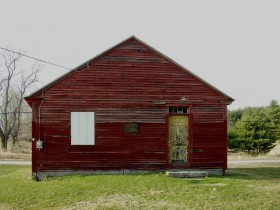
Dudley’s Corner School5 Dudley Corner Road (2003) The Dudley’s Corner School House is a cultural remnant of a significant amount of the 19th century history. Although located about three miles south of the current village of Skowhegan on the east side of the Kennebec, it was the center of education, government and religion for several decades. A school was built here in 1804. Prior to moving into town in 1840, the First Christian Church met in the school house; it was also used for town meetings and elections. In 1835 it was renovated or rebuilt into its current, modest, Greek Revival form. It was the site of town meetings and elections until 1849, holding classes until 1921.* |
|
|
|
|
|
Somerset County Courthouse, @ |
Skowhegan Historic District |
Skowhegan Historic District
The District is a homogeneous and cohesive grouping of 38 architecturally and/or historically significant buildings most dating 1880-1910. It encompasses the main commercial area including the most southerly block of Madison Avenue and the two westernmost blocks of Water Street. See selections below of downtown from 1981. Photos by Frank A. Beard.
All major styles of the period are represented, including the work of John Calvin Stevens. The district retains its turn of the century ambiance – that of a prosperous inland commercial center – quite different from such areas in coastal communities.*
Bigelow–Page House
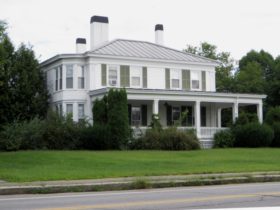 [20 High Street] Built in 1846-47, the Bigelow-Page House is one of the earliest known buildings designed and erected by Joseph Bigelow (1804-1883), a Skowhegan carpenter/builder of distinction. The 1850 census gave his age as 46 years, born in Maine. His first documented project was the design and construction in 1842 of the First Baptist Church in Bloomfield.
[20 High Street] Built in 1846-47, the Bigelow-Page House is one of the earliest known buildings designed and erected by Joseph Bigelow (1804-1883), a Skowhegan carpenter/builder of distinction. The 1850 census gave his age as 46 years, born in Maine. His first documented project was the design and construction in 1842 of the First Baptist Church in Bloomfield.
The expansive and somewhat irregularly composed dwelling with its bold Greek Revival style is generally typical of his particular style. In 1893 the house was acquired by Edward P. Page whose widow and son remained there until 1927. The family made substantial Colonial Revival style changes to the house between 1903 and 1909. In 1988 it remained much as it was then.*
First Baptist Church, Former
[west side of Main Street, South of Maine Route 104] [See photo above] The First Baptist Church is a Greek Revival style brick building erected in 1842-44 by local architect/builder Joseph Bigelow. The building is significant as one of the few documented projects by Bigelow and because of its highly unusual plaster ceiling. The Baptist congregation began in 1796 when a church organization was formed by residents of Canaan, Clinton, and Fairfield. This organization became the First Baptist Church of Canaan in 1803. Its first meeting house was built in 1812; a decade later it was moved to the site of the existing structure, where it was destroyed by fire on November 11, 1841.
A new church, designed by Joseph Bigelow was dedicated in June, 1844. It was remodeled twice before it was closed when the Baptists merged with the Congregational Church in 1919. The building became a community hall in 1926. Later it became the headquarters for the local National Guard company and then a VFW hall. The Town of Skowhegan owned it in 1988. *
Gould House
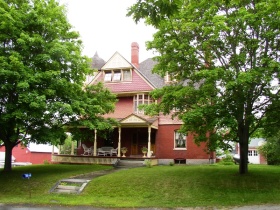 [31 Elm Street] Samuel Wadsworth Gould had this elegant Queen Anne style home built in 1887. A rare example of this architectural style in Skowhegan, the Gould house is one of the finest Queen Anne homes in the State. Samuel Gould was a native of Porter who began practicing law in Skowhegan in 1880 and became active in local politics.
[31 Elm Street] Samuel Wadsworth Gould had this elegant Queen Anne style home built in 1887. A rare example of this architectural style in Skowhegan, the Gould house is one of the finest Queen Anne homes in the State. Samuel Gould was a native of Porter who began practicing law in Skowhegan in 1880 and became active in local politics.
For twenty years he operated the Oxford Hotel in Skowhegan along with his law practice. Gould purchased an Elm Street lot in 1885, but the site was already occupied by James White’s tavern (which housed Skowhegan’s first dancing floor). In 1886 Gould moved the tavern to another-lot and constructed his lovely dwelling in the fashionable neighborhood. The brick and wood residence was completed in 1887 for the young lawyer and his wife and was painted “contrasting, but harmonizing colors.” Once owned by Lyndon and Caroline Huff, it was in excellent condition in 1982 and stands as a dramatic example of Queen Anne style architecture.*
Weston, Samuel, Homestead
[south of Skowhegan on U.S. 201; N44° 44′ 50.43″ W69° 39′ 49.72″] The Weston homestead (above right) is without doubt one of the finest examples of post-colonial architecture in the Upper Kennebec River valley. It has a two-story wood frame “L-plan” with the main clapboarded facade facing east and a secondary facade of the same nature facing south.
Its first floor main portico is supported by Doric columns. The building has a metal-sheathed hipped roof and two internal brick chimneys. The rear of the structure is shingled and has a first floor porch running the length of the structure. The interior of the building is largely intact and is a fine example of transitional Georgian to Federal decoration. * [Frank A. Beard B&W photo] (private residence)
Skowhegan History House
[66 Elm Street] Built 1839 by blacksmith Aaron Spear, the house was sold in 1845 to Deacon James H. K. Lord who became a pillar of the community and who, with his wife, brought up their family of ten children in the little brick house. After having several owners, it was acquired by Louise H. Coburn, historian of Skowhegan, who donated it to the town as a museum in 1935. A fireproof museum wing at the rear was added, faithfully copying the style of the original structure. * [See photo above.]
Additional resources
*Axelman, Eric 2005, “Skowhegan Grange Hall, ca. 1894,” posted in https://www.mainememory.net/sitebuilder/site/2829/page/4461/display?use_mmn=1


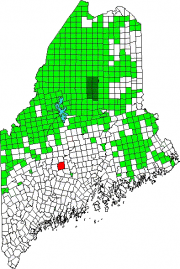
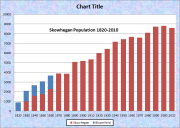
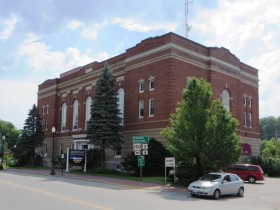
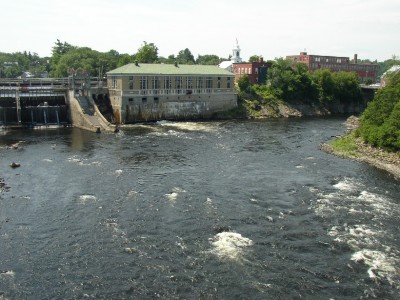
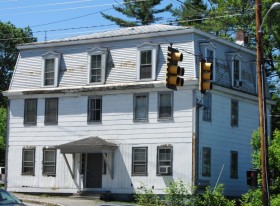
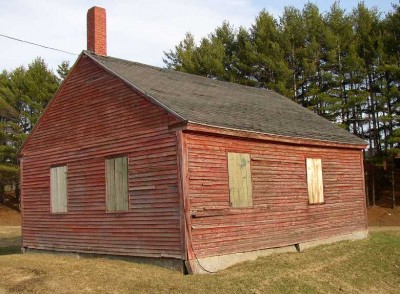
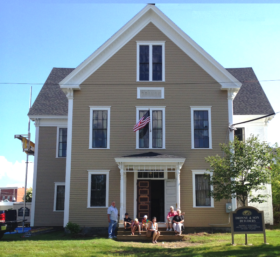
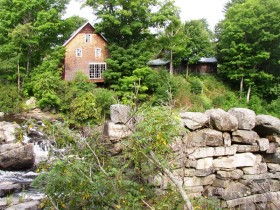
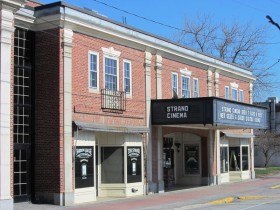
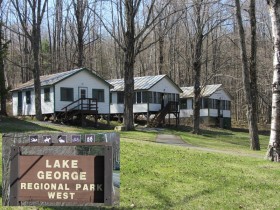
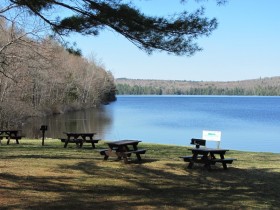

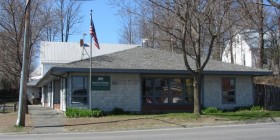
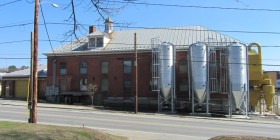
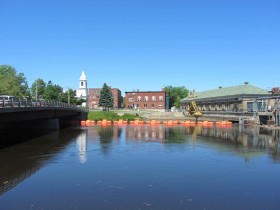
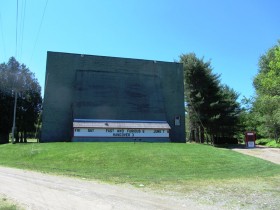
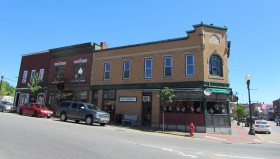
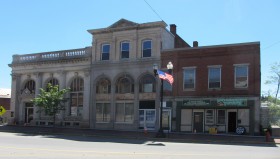
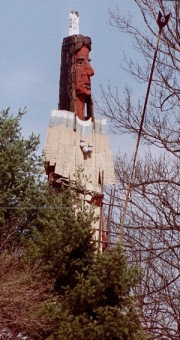
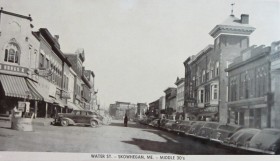
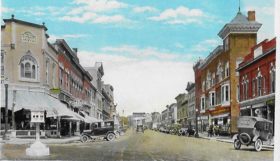


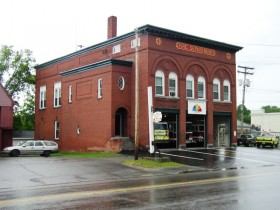
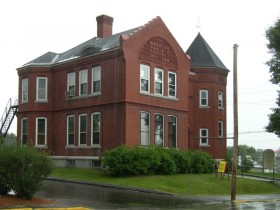

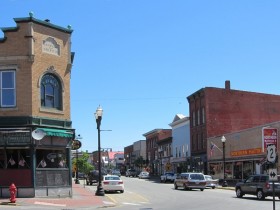
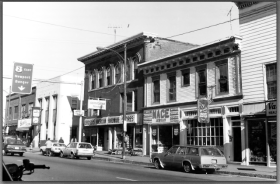
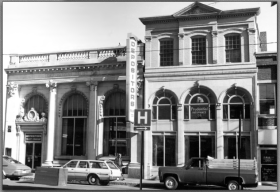

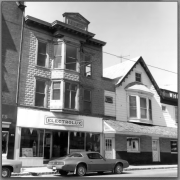
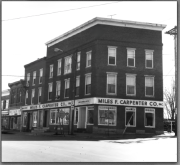
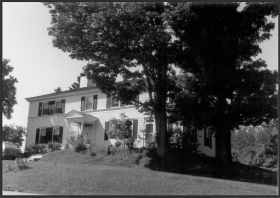
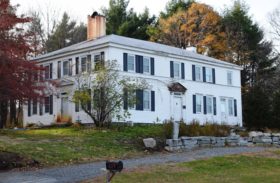
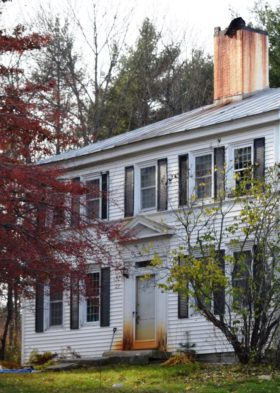
In reply to Helen Richmond: Skowhegan A Register (1905) has several references to W. L. Walker of Weston Street in its “Historical” [pre-1905] section of Chapter XI “Business Directory.
W. L. is listed under “Merchants,” “Wood,” “Lumber Dealers,” “Lumber,” and “Lumbermen.” No other references were found.
Consider contacting the Skowhegan History House for more information: http://www.skowheganhistoryhouse.org (2014)
W L Walker was my great grandfather, William Lincoln Walker. He was at one point a state legislator, but owned/ran the sawmill in Malbon’s Mills for a number of years. I am not quite sure how/when the transfer from Bradbury to my grandfather ocurred. He and his wilfe, Ellen Allen Walker (called Nellie), lived in the farm on the right just as you reach Malbon’s Mills. My grandfather was their only child, Charles William Walker, and ran the mill with his father and after my g-grandfather could no longer run it. My grandfather and his wife, Eva LaCasce, lived in the green house, where the Notch Rd and the West Ridge converge, until my uncle, William Norman Walker, was of school age. Then they moved into Skowhegan (Mt Pleasant Ave), but my grandfather and, eventually, my uncle ran the mill. When ice took down the mill-works at the stream, my uncle had a portable mill in the field above the mill yard. In the late 1950s he finally went into insurance and moved away with his family, though he retired back to Maine in the 70s. When I was born, my parents lived in the little “mill house” beside the mill yard off the Notch Rd. We lived there until I was 7. The house is now long gone.